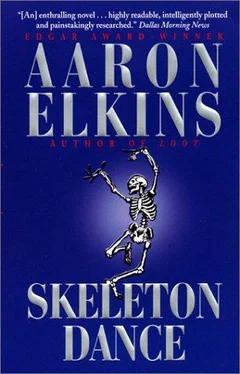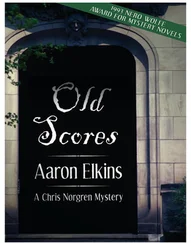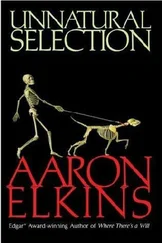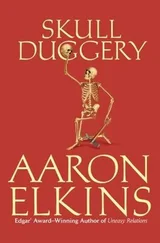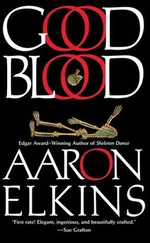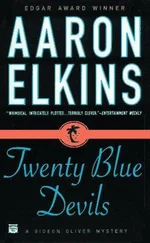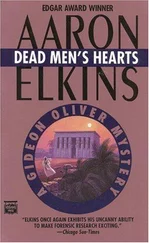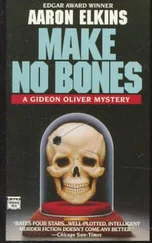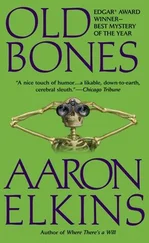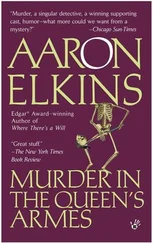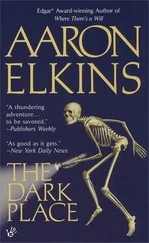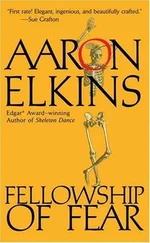Aaron Elkins - Skeleton dance
Здесь есть возможность читать онлайн «Aaron Elkins - Skeleton dance» весь текст электронной книги совершенно бесплатно (целиком полную версию без сокращений). В некоторых случаях можно слушать аудио, скачать через торрент в формате fb2 и присутствует краткое содержание. Жанр: Классический детектив, на английском языке. Описание произведения, (предисловие) а так же отзывы посетителей доступны на портале библиотеки ЛибКат.
- Название:Skeleton dance
- Автор:
- Жанр:
- Год:неизвестен
- ISBN:нет данных
- Рейтинг книги:5 / 5. Голосов: 1
-
Избранное:Добавить в избранное
- Отзывы:
-
Ваша оценка:
- 100
- 1
- 2
- 3
- 4
- 5
Skeleton dance: краткое содержание, описание и аннотация
Предлагаем к чтению аннотацию, описание, краткое содержание или предисловие (зависит от того, что написал сам автор книги «Skeleton dance»). Если вы не нашли необходимую информацию о книге — напишите в комментариях, мы постараемся отыскать её.
Skeleton dance — читать онлайн бесплатно полную книгу (весь текст) целиком
Ниже представлен текст книги, разбитый по страницам. Система сохранения места последней прочитанной страницы, позволяет с удобством читать онлайн бесплатно книгу «Skeleton dance», без необходимости каждый раз заново искать на чём Вы остановились. Поставьте закладку, и сможете в любой момент перейти на страницу, на которой закончили чтение.
Интервал:
Закладка:
"I see," Gideon said. "All the same, it couldn't hurt to have another look. Speaking as a trained forensic anthropologist."
The only place in the mairie where a relatively private, unclaimed space could be found for Gideon was in the snack area and it was there, where he and Joly had sat earlier, that he laid the bones out, this time with a pale cup of instant coffee beside him. One of the other tables was occupied by a pair of clerks from the treasurer's office who were gobbling down a late lunch, but when they saw what was being spread out four feet away from them they re-wrapped their sandwiches in waxed paper, picked up their soft-drink cans, and silently departed.
On the table in front of Gideon, and taking up very little of the tabletop at that, were eleven human bones-the tiny rodent bones had been discarded-or rather what was left of eleven bones after Toutou had worked them over. All were from the right side: the femur and fibula from the leg, six assorted hand and wrist bones, two partial ribs, and the ulna, the larger of the two forearm bones. As he'd expected, they were in awful shape. The femur, fibula, and ulna were no more than sticks, their ends completely chewed away, and everything bore the deep, parallel scores and furrows of prolonged, happy canine gnawing.
They don't look like very much, Joly had told him. "Pathetic, is what they look like," Gideon answered aloud now, looking at the worn shards and slivers. Chances were, Emile had probably said all there was to say about them: they were human, they were male, and they were adult.
Even the ribs, which had offered the most hope, weren't of any use. Gideon had reached for them first, hunting for signs of the periostitis that would point-against all odds, he now believed-to their being Bousquet's. There weren't any such signs, but even that meant nothing because they weren't the ribs he needed. Not only were they from the wrong side, but they were the bottom two, the eleventh and twelfth, the "floating" ribs, below the lungs themselves and thus lower than where the tubercular lesions would have shown up if they'd been there. So their absence told him nothing at all one way or the other.
"Not one blessed thing," he grumbled. Maybe this person had had t.b., maybe he hadn't. Maybe he was Bousquet, maybe he wasn't. Human, male, and adult; that was it. "Damn."
He poked at the sorry fragments without much optimism, but came to a sudden halt when he reached the forearm bone, the ulna. "Hey, no callus formation," he said, moving his thumb over the surface. "What do you know about that? No thickening, no inflammation!"
A woman carrying a box with knitting needles and wool walked into the snack room, turning on her heel and walking out again when she saw the large male sitting at a table in earnest conversation with a bone. In English. Gideon smiled absently in her direction, seeing her but too lost in thought to quite register her. The absence of inflammation on the ulna, as far as he knew, was of no conceivable help in identifying the remains, but it had engaged his attention as a physical anthropologist, for whom the chief challenge and the chief interest of bones was always the reconstruction of the living human being from them-and the more fragmentary and incomplete the skeleton, the greater the challenge.
What was absorbing him at the moment was a mental comparison with the skeleton's other ulna, the one he'd seen when he'd examined it in the abri. That one, as he'd told Joly, had been markedly enlarged and inflamed. He'd assumed at the time that it had probably been the result of some kind of systemic disease, but if that were true, he'd expect it to show up bilaterally-not necessarily of course, but more likely than not. Yet this one, the right one, the one in his hand, was perfectly healthy. That made him wonder if its presence on the other one had possibly been caused by some kind of trauma.
But not your usual trauma. Not a single blow, for example-the bone hadn't been broken, or chipped, or cracked. Its condition might conceivably have been the result of a localized infection, possibly one that had ulcerated, but he didn't think so. He dearly wished he could have it in front of him now, but he remembered it pretty well as it was, and what he remembered told him it had come from some kind of repeated punishment over time-years, maybe. Some kind of friction, pressure, pounding…
With his fingers he outlined on his own forearm the region that would have been affected: the part just below the elbow; not the "back" or "front' of the forearm so much, but the "outside" of it-the pinky side, the part protected by the volar antebrachial muscles. "Now what the heck would cause something like that?" he asked the ulna. "What kind of work, what kind of activity… hobby…?"
He stared at it, brushing his fingers over the roughened areas, for a long time without getting anywhere. There was a reason for them, all right, but what it was he couldn't fathom. "Ah, the hell with it," he finally muttered, putting it aside for the time being and beginning to sift through the hand and wrist bones.
The bones from the wrist were hopeless, the capitate, trapezium, and hamate gnawed to barely recognizable nubs; surprising, really, that they hadn't been consumed altogether, small as they were. Those from the hand-the first three metacarpals-were in slightly better shape but didn't promise much, metacarpals being among the less informative bones of the body. But the moment he picked one up-even before he picked it up-something leaped out at him, something important enough to make him sit up with a start. And abruptly, his heart was in his mouth. In a single instant, out of nowhere, a whole series of isolated, disconnected details, meaningless until now, had suddenly spun about and clicked unexpectedly together into a recognizable-an unmistakable-whole. He was on to something at last, but it seemed so impossible, so fanciful What he was staring at was the first metacarpal bone, the one that forms the base of thumb, the part hidden in the palm of the hand. And running down the middle of this short, stout bone was something that should have jumped out at him the second he opened the folder: a sort of miniature canyon with high, craggy walls that stood out like a tiny mountain range. This, he knew was the end-product of a fracture that had healed without having been properly set. The roughened area was a dense extrusion of bone, two strong, rugged wings of lamellar bone that had formed around the break to repair and strengthen it. It wasn't one of nature's prettier healing techniques, but it was enormously effective, making the bone stronger than it had been in the first place.
What made this particular break so unusual, so significant, was its direction; the bone hadn't snapped crosswise, as bones usually broke, but had cracked down its length, so that the healed cleavage ran in a slight spiral from one end to the other. And the two ends of the bone themselves had rotated a few millimeters in relation to one another and then remained there as the injury healed.
It was, in other words, a torsion fracture, the kind of thing that happened as a result of irresistible twisting pressure. Most commonly, you saw them in skiing accidents, when the body spun during a fall but the foot stayed put, being enclosed in a rigidly fixed boot. When that happened, something had to give, and that something, when it wasn't the ligaments of the knee, tended to be one of the bones of the ankle or the leg.
But thumbs-thumbs were a different story. Unless you stuck your thumb firmly in a hole in the wall, like the little Dutch boy, and then tried a backflip, there weren't many ways you could wreck your first metacarpal in quite this manner. In fact, in all his experience, Gideon had encountered one way and one way only.
"My God," he whispered.
Читать дальшеИнтервал:
Закладка:
Похожие книги на «Skeleton dance»
Представляем Вашему вниманию похожие книги на «Skeleton dance» списком для выбора. Мы отобрали схожую по названию и смыслу литературу в надежде предоставить читателям больше вариантов отыскать новые, интересные, ещё непрочитанные произведения.
Обсуждение, отзывы о книге «Skeleton dance» и просто собственные мнения читателей. Оставьте ваши комментарии, напишите, что Вы думаете о произведении, его смысле или главных героях. Укажите что конкретно понравилось, а что нет, и почему Вы так считаете.
